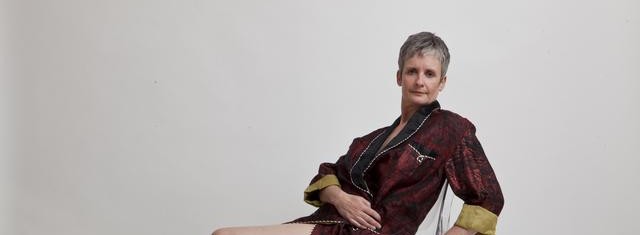Art Soc Draws Out ‘Still Life’
Still Life: An Audience with Henrietta Moraes
Members of Warwick Art Society attend ‘Still Life’ part of the (L)one series at Warwick Arts Centre, a biographical play about the turbulent life of Henrietta Moraes, model for Francis Bacon and Lucien Freud, with the audience partaking in live life drawing.
Laura Glenny
Vulgar and yet surprisingly relaxing, Still Life is a short play inspired by Henrietta Moraes, set during a period of her life in the 1950s and 1960s. Sue MacLaine is the actress, model and writer for this play which combines storytelling and life drawing. Henrietta Moraes modelled extensively for prominent artists such as Francis Bacon and Lucian Freud, so anyone with a fragment of artistic knowledge would recognise the famous poses recreated.
MacLaine started by stripping off and announcing that this, her body, was what we had to work with. After which she launched into a highly memorable account of her astonishment when she watched her pubic crabs crawl across a studio floor. Mind you, she reassured the audience, that was years ago, and ‘we all had crabs back then’. Fans of Virginia Woolf will certainly enjoy the lack of a definitive time frame and highly emotive anecdotes, which MacLaine recounts in a rather rambling and disjointed poem.
Should you see it? Yes, if you’re not easily affronted by bad language and fancy an artistic challenge. It certainly adds a new dimension to life drawing when you have to contend with a moving, talking, and restless model. Even more so when that model can, and will, exercise the right to randomly wonder round inspecting your work. If you expect an air of refinement, you will be disappointed. Yes, there might have been classical music, but it clashed with the subject matter, as MacLaine herself admitted she lacked depth. Fortunately, a brief bout of French raised the tone. Then, MacLaine once again returned to her favourite topic of sex, seemingly content in the knowledge that her performance had both depth and raw intimacy.
Aimée Williams
Armed with a stop-watch, MacLain informed the audience before holding her poses, and the length of time she would hold each pose for. During which, she would stall her monologues, allowing the audience to concentrate on drawing her. This somewhat novel concept of incorporating of life drawing into the experience of a play, encouraged the audience to further engage with the actress, than had she just been storytelling, and vice versa for MacLain to directly engage with her audience.
The play was well structured, with the famous poses occurring in an appropriately chronological sequence. Even when not holding poses, MacLain was seated or stood in a slightly more stylised version of natural positions, which often remained the same for a few minutes, making it possible and inviting for the audience to draw her, even while she was speaking.
Throughout, the idea of ‘working around our mistakes’ in our sketches, rather than to erase them, seemed as though a wonderful mirror to the troubling life of Henrietta’s with all her faults and idiosyncrasies. By the end of the play, I had come to appreciate my trial pencil lines which had not quite hit the mark, seeing that they gave the sketch movement and individuality, in the same way as I could appreciate the different drawings techniques of those sat around me. There was a rare, truthful beauty about leaving the sketch with mistakes and all, a concept equally applicable to the artist as to the individual.
In the same vein, MacLain demanded the audience draw her as we saw her, to draw her as she was. Before she made the demand I felt as though I wanted to capture the beauty of the woman’s frame, which I came to appreciate increasingly during the performance. No doubt this was in part due her initial declaration of her own insecurity and of a common human insecurity. She boldly stated that this was what ‘we have to work with today’: she conveyed her strengths and vulnerabilities from the outset.
The (L)one series at Warwick Arts Centre:
The (L)one series of events at Warwick Arts Centre, is showcasing single person performances. See the website for upcoming events in the series and David Levelsey’s review of ‘Bitch Boxer’, part of the series, featured on Warwick Arts Centre Storify.

Comments (1)
Hello,
My name is misspelled and should have an ‘e’ on the end of it.
The classical music was nothing to do with my performance, but came from the exhibition in the adjoining room at Mead Gallery.
There is no admission of not having depth in the piece, the line is, after speaking in French; “am I giving the illusion of depth?” The ‘illusion of depth’ being an term that has meaning both as a pricker of pomposity and also a visual art term.
I wonder about the term used ‘air of refinement’ in Laura Glenny’s piece of writing…is she talking about Henrietta not being refined or the play itself? It is a shame that having watched a play that explores how we see ourself Nd how others see us, Laura Glenny’s was not able to reflect on her own responses to the work and why she finds a naked woman, talking frankly about a difficult life ‘vulgar’. Let’s hope she will continue to watch performance that challenges her won sense of self and be a little more open to rising to that challenge.